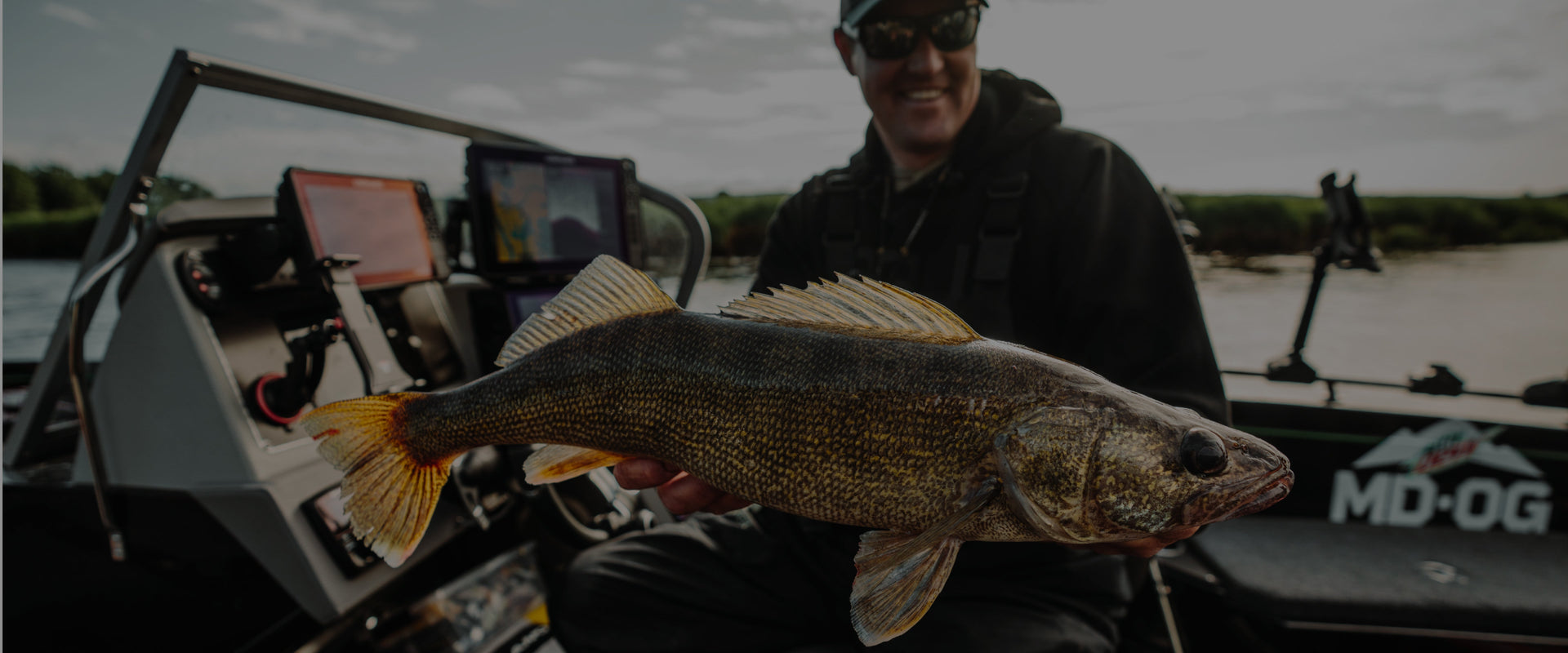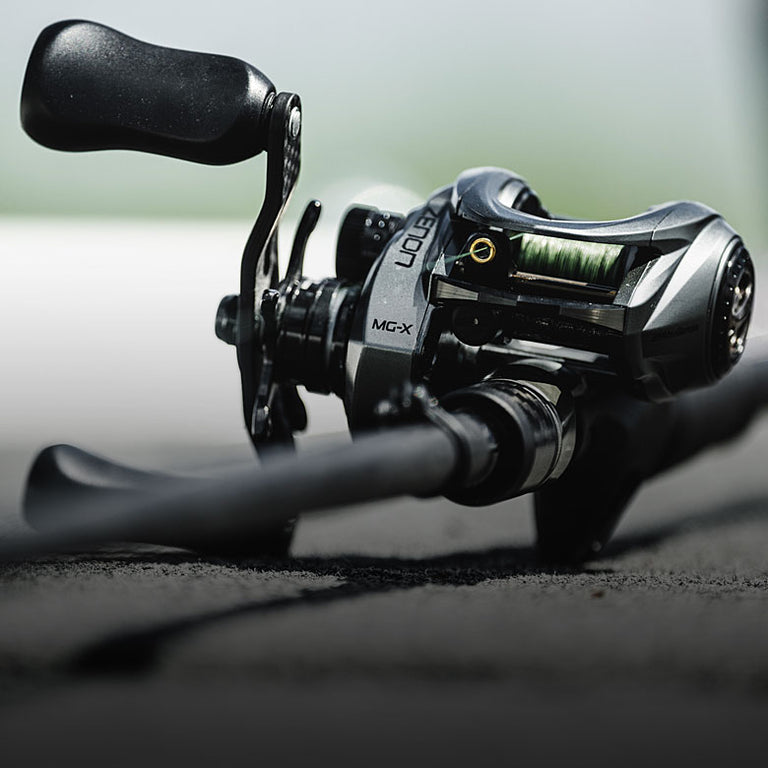
Get pro tips for catching walleye in rivers—find out which gear, bait, and techniques will give you the best chance...
Read More >
Low Visibility
One of fluorocarbon's biggest benefits is it's nearly invisible underwater. This is because it doesn't appreciably distort light passing through the line (it has nearly the same refractive index as water), and it's a huge factor in clear water and when targeting skittish fish.
Abrasion Resistance
Fluorocarbon's low visibility characteristics allow anglers to use stouter pound test lines in situations such as heavy cover tactics for bass. As an added benefit it also has incredible abrasion resistance and as such has quickly become a top choice of the pros when fishing the thickest cover or dragging baits along the bottom.
Sensitivity
Fluoro's tightly packed molecules transmit more energy than mono, better telegraphing information from the other end of the line, such as light bites or your lure ticking bottom. Also boosting sensitivity, fluoro sinks faster than mono, resulting in less slack or bow between the lure and rodtip.
Toughness
Fluorocarbon is more abrasion resistant than standard nylon monofilament of the same diameter. Plus, while the sun's harsh ultraviolet rays weaken nylon over time, fluorocarbon shrugs off UV with no ill-effects.
Waterproof
Unlike mono and some superlines, fluoro doesn't absorb water. This means it has the same strength, sensitivity and handling below the surface as it does when dry. It feels and acts the same on your first cast as it does on your last.
Hooking Power
Lacking the low-end stretch of nylon mono, fluorocarbon delivers more solid hooksets, even at long distances. If you need to drive the hook home at the end of a long cast, this is a key consideration.
Diameter
Fluorocarbon is about the same diameter as nylon monofilament of the same breakstrength. But because fluoro is so hard for fish to see, you can upsize pound test for extra strength and abrasion resistance, without spooking line-shy fish.
Manageability
Fluorocarbon is stiffer and has more memory than mono and superlines, making it the least manageable fishing line. However, advancements in spoolable options such as Berkley Trilene 100% Fluorocarbon have made today's premium fluoros far more well-behaved than their forerunners, so this is a minor consideration, provided the line is paired with an appropriately-sized reel and you don't over-fill the spool.
Shock Strength
Nylon mono rules this category, which refers to a line's ability to absorb sudden impacts such as hard hooksets and headshakes. Fluorocarbon falls in between mono and superline. If shock strength is a big factor in your fishing, but you don't want to give up fluoro's stealth and sensitivity, loosening your drag can help compensate.
Sink Rate
Fluoro sinks faster than mono, so it's not the best fishing line for topwater lures and small baits you want to suspend in the water column. On the flip side, fluoro is perfect for pinning bait close to bottom and getting more depth from weightless presentations. Plus, many pros us this line to achieve greater running depths from crankbaits in both trolling and casting situations.
Knot Strength
If you cinch down a knot without wetting the line, fluorocarbon will fail. However, a properly tied and moistened Palomar Knot or Trilene Knot provides excellent knot strength.
Spoolable fluorocarbon is a great choice for a variety of presentations where low visibility, strength, hooksetting power and sensitivity are key. If near-zero stretch and ultra-thin line diameters are critical to the presentation, there's no beating a superline. But a fluorocarbon leader greatly reduces the chances of spooking line-wary fish. Here are a few top choices for spooling and leader material.
Berkley Trilene 100% Fluorocarbon XL
Unparalleled for manageability among fluoros, this limp, well-behaved line works well for presentations from drop-shotting to deep Carolina rigging.
A great all-around pick thanks to its easy-casting, sensitive nature.
Berkley Trilene 100% Fluorocarbon
Choice of the pros, engineered for the highest shock strength in a fluorocarbon, plus abrasion resistance and knot strength.
Low-vis, strong and abrasion resistant—with just the right amount of stretch, it's the best fishing line for pairing with superlines or high-performance nylon monofilament.